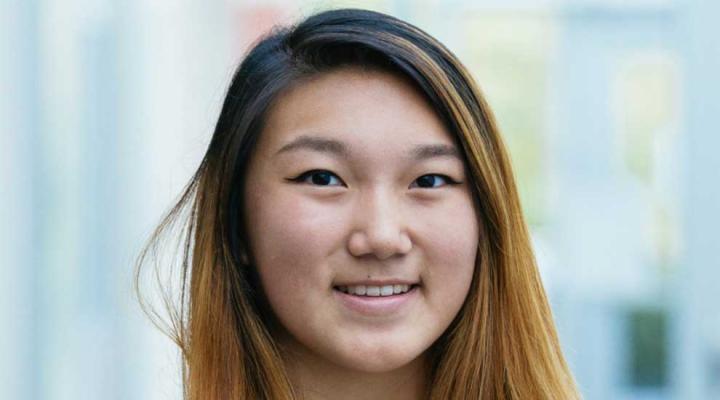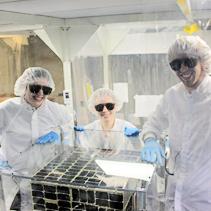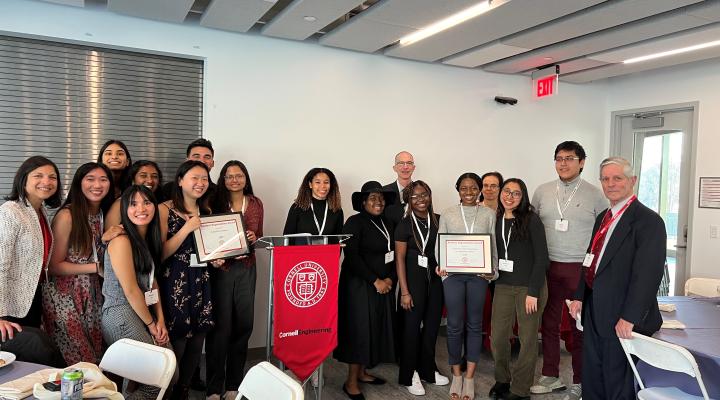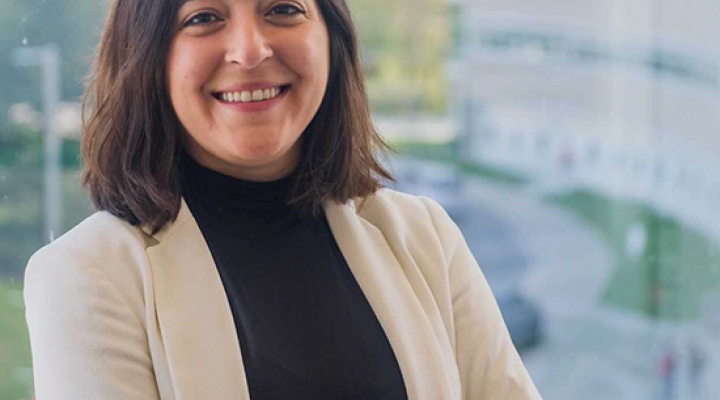1. What research are you working on?
I’m working on the Cornell University Satellite (CUSat) team. CUSat is an undergraduate project team that has designed, built, and tested two satellites as part of a competition sponsored by the Air Force Research Laboratory (ARFL) called the University Nanosat Program. During the competition universities design, build, and present their final products to a panel of judges, who then select a winner. In 2007, CUSat was selected as the winner for the University Nanosat-4 Program. By winning the competition, CUSat received the right to have the project launched into space as well as additional financial and integration support. CUSat is expected to launch in March 2012.
2. How did you get involved?
I learned about CUSat by attending one of their information sessions when I was a freshman and was immediately captivated by the project. However, it took me a few semesters to work up the courage to apply. I joined CUSat during the Fall 2009 semester as part of their Attitude Determination, Control, and Navigation Subsystem (ADCNS), which is responsible for controlling the spacecraft and modeling all of the dynamic interactions. This year I became the ADCNS subsystem lead which means that I am also responsible for making sure that ADCNS will meet all system requirements for our upcoming launch.
3. Do you have any advice for other students considering research in Mechanical and Aerospace Engineering?
Find a project that you’re passionate about. Working on a research or project team is a big commitment both in terms of time and energy. If you’re going to be putting in that much time and energy you need to be passionate about the work that you are doing and the people that you are working with. Without both of these you won’t be satisfied with your experience. However, if you can find the right project and the right group then all of your hard work and time spent will be incredibly rewarding.
4. Why did you choose to study Mechanical and Aerospace Engineering at Cornell?
I became fascinated with spacecraft when I was in Girl Scouts. Since elementary school, I knew that I wanted to pursue a career in the aerospace industry. I chose to study mechanical engineering at Cornell specifically because of the unique research and project opportunities. I felt that mechanical engineering gave me the best exposure to a broad field of aerospace topics.
5. What do you do for fun?
I am a percussionist in the Big Red Marching Band. I also really love to play softball, go rock climbing, and play the violin.
From the Lunch with ASME series.
Where is Tricia Now?
Trish graduated with her BS in January 2012 and her M.Eng in Aerospace Engineering in August 2012. Tricia's work on Professor Peck's satellite research teams gave her a huge advantage when looking for her first job; allowing her to pick from three amazing offers from top companies!
After graduating, Trish began working for The Boeing Company as a satellite Guidance, Navigation, and Control engineer in Los Angeles. Her Cornell experience continues to shape her career, making her highly sought after. Tricia is contributing in a unique and uncharacteristic way (for an early career employee) by working on Boeing's cubesatellite/small satellites, key national assets, and leading several outreach and R&D programs. Every day she directly applies what she learned from working on Professor Peck's research teams to her job. In her free time Trish enjoys sailing, going to the gym, and accomplishing the unthinkable (sleeping 7+ hours a day).
Tricia's work as a satellite engineer has been highlighted in several articles, conference papers, and national media campaigns, including: Boeing's Centennial Program, the Curiosity Machine, and PBS Learning Media.






